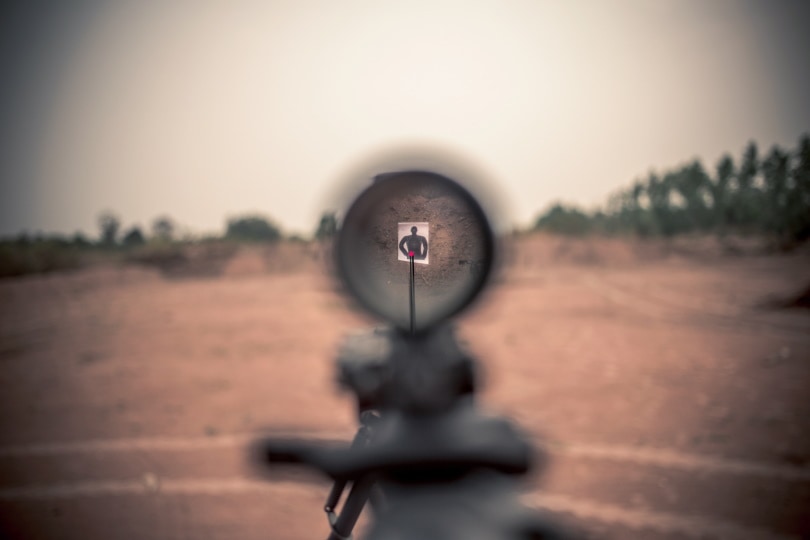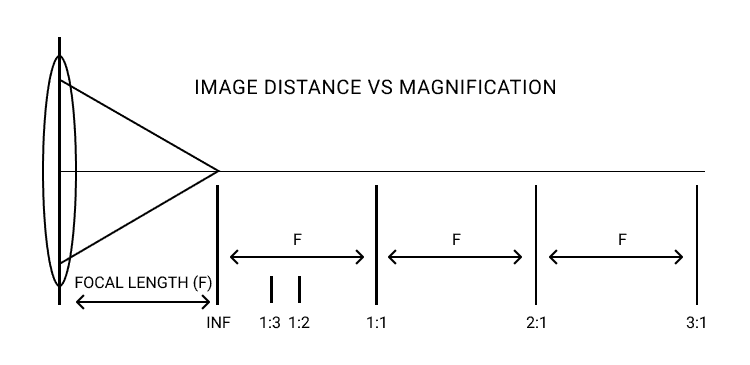Magnification vs. Diopter: Understanding the Difference
Last Updated on

We’ve always gone heavy on the details when talking about magnification powers, but we’ve barely touched the surface while discussing diopters. And that’s probably the reason why some optical users automatically assume the diopter of a unit is not as important as its magnification. Well, they’re wrong.
Today, we’re going to discuss these two measurements, and maybe even learn how to use one to calculate the other.

An Overview of Magnification
Magnification is simply a measurement ratio produced by an optical system. And we all know a ratio is basically a comparison of two or more sizes/values. In the world of optics, we say magnification is the comparison between the actual object size and the size of its image.
Mathematically, that would be illustrated as:

But you also need to remember this; if you keep pushing the magnification above the useful range, you’ll end up with what we call an empty magnification. A situation where no additional detail is resolved despite the fact that the image keeps on getting bigger.
We have different types of magnification. Namely:
- Relative-Size Magnification: In this type of magnification, you utilize the size of a larger screen to enlarge the size of whatever object you’re interested in magnifying.
- Relative-Distance Magnification: It’s all about reducing the distance between the user and the object so as to be able to view more details.
- Optical Magnification: Using different lenses, as in the case of a telescope, to enlarge a specimen under observation.
- Angular Magnification: When you compute the tangential ratio of an object, and its image-subtended angles, you get the angular magnification.
- Electronic Magnification: Increasing the size of an object using electronic magnifies.

Lenses
Now, we all know there would be no magnification without lenses. Lenses are transmissive optical devices that are limited with two spherical surfaces, and responsible for dispersing or focusing light beams through refraction.
By the way, the type of lenses that we’re talking about in this context don’t include prism lenses. We are all cognizant of the fact that prism lenses also do refract light, but they aren’t designed to focus that light.
Magnification Lenses
Simple Lens
This is the type of lens that you’d typically go for if you’re trying to read tiny writings in a book or a newspaper. Its strength to magnify any object is incredibly low, as it ranges from 2x to 6x. We would not recommend this type of lens to anyone looking for something that has a high magnification power or can produce clear, detailed images.
Compound Lens
Telescopes and microscopes are the only optical devices that come to mind whenever anyone talks about compound lenses. Both devices often rely on multiple lenses to increase their magnification powers.
So just to recap, this is how you’ll be able to differentiate the two: If the lens makes the object appear 4 feet closer, that’s a simple lens. But if it appears 4 feet closer six times, it’s definitely a compound lens.

An Overview of a Diopter
A diopter is also a measurement and an optical power of a lens. So right out of the gate, you can tell just how important it also is when dealing with bifocals.
It’s easy to figure out what the diopter strength of a lens is by looking at its focal length. And by definition, the focal length of a lens refers to that distance between its center point, and the point at which you get a clear image after focusing on an object. The relationship between a lens’ focal length and its diopter strength is somewhat inversely proportional.
For example, if your lens’ diopter is 2, the focal length will be ½ m. If it’s 3 or 4, it’s going to be ⅓ or ¼ m, respectively. But a focal length of 1 m is just the same as a 1 diopter lens.
It’s really important to understand this relationship because the focal length is still a factor that influences the magnification of any optical device. A longer focal length significantly decreases a lens’ magnification ability, and that’s why optical users can’t stop complaining about getting low-quality or dull images, anytime they use lenses that have low diopter strength.
You’ll also hear your ophthalmologist—a physician who specializes in eye and vision care—talk about diopters a lot. It’s the reason why the human eye is able to clearly focus on any object within a reasonable distance. If your eyes are healthy, they’ll have 40 diopters. Meaning, you can comfortably focus on something that’s 2 cm from your eyes.
The age of the individual is yet another factor worth taking into account. Say, he or she is younger than 25. They’ll naturally have the ability to make adjustments, and enjoy an additional 20 diopters. However, if they’re older, that focusing flexibility gradually drops to 10 diopters. And that’s caused by two things: the hardening of the lens, and the weakening of the eye muscles due to aging. By 45, you’ll only be left with a 1 diopter, and most likely be suffering from a condition known as presbyopia—an age-related loss of your eyes’ ability to focus on a close object.
Converting Magnification to Diopters
So, we’ve already explained how different these two measurements are. We’ve said magnification measures the change of an object’s size whenever it’s being viewed through an optical device, while the diopter measures the lens’s strength to bend light. And seeing as the lens’ ability to bend that light is what’s responsible for the magnification of the object, these two variables are related in a way. Calculating the diopter of your lens is very much possible, as long as you know its magnification power, and vice versa.
For the sake of clarification, let’s work with an example:
Now, the first thing that we’ll do here, is to take a note of the lens’ or device’s magnification power. If the lens has a magnification power of 1x, the size of the image that you’ll see through it will be twice the size of the object—an increase of 100 percent. Of course, that’s if it’s being viewed with the naked eye.
Now let’s work with a higher magnification power of 2.5x and an object that’s 3 inches in size. Since the increase in the object size will be by 250 percent, the image size will appear 10.5 inches big — 7.5-inch increase, plus the object size, which is 3 inches.
To calculate the diopter, we’re going to have to multiply that magnification by four, and here’s why:
When a 1d lens (1 diopter) bends light, the size of the object being viewed increases by 0.25. So if we had a 4d lens, the size of our object would increase by 100 percent. Hence, a magnification of 1x.
Going back to the above example, our lens’ diopter will be:
2.5 multiplied by 4, which equals to 10d.


Conclusion
Even though these two measurements are different, scientists use them as a means of standardization. It’s easier to compare different objects under observation if you’re using an optical device that has the same diopter strength or magnification power. So, we hope the next time you’re having a conversation with a friend or a colleague, you won’t be confused when they use either one.
Featured Image Credit: Puttawat Santiyothin, Shutterstock
About the Author Robert Sparks
Robert’s obsession with all things optical started early in life, when his optician father would bring home prototypes for Robert to play with. Nowadays, Robert is dedicated to helping others find the right optics for their needs. His hobbies include astronomy, astrophysics, and model building. Originally from Newark, NJ, he resides in Santa Fe, New Mexico, where the nighttime skies are filled with glittering stars.
Related Articles:
How to Clean a Refractor Telescope: Step-by-Step Guide
How to Clean a Telescope Eyepiece: Step-by-Step Guide
How to Clean a Rifle Scope: 8 Expert Tips
Monocular vs Telescope: Differences Explained (With Pictures)
What Is a Monocular Used For? 8 Common Functions
How to Clean a Telescope Mirror: 8 Expert Tips
Brightfield vs Phase Contrast Microscopy: The Differences Explained
SkyCamHD Drone Review: Pros, Cons, FAQ, & Verdict
